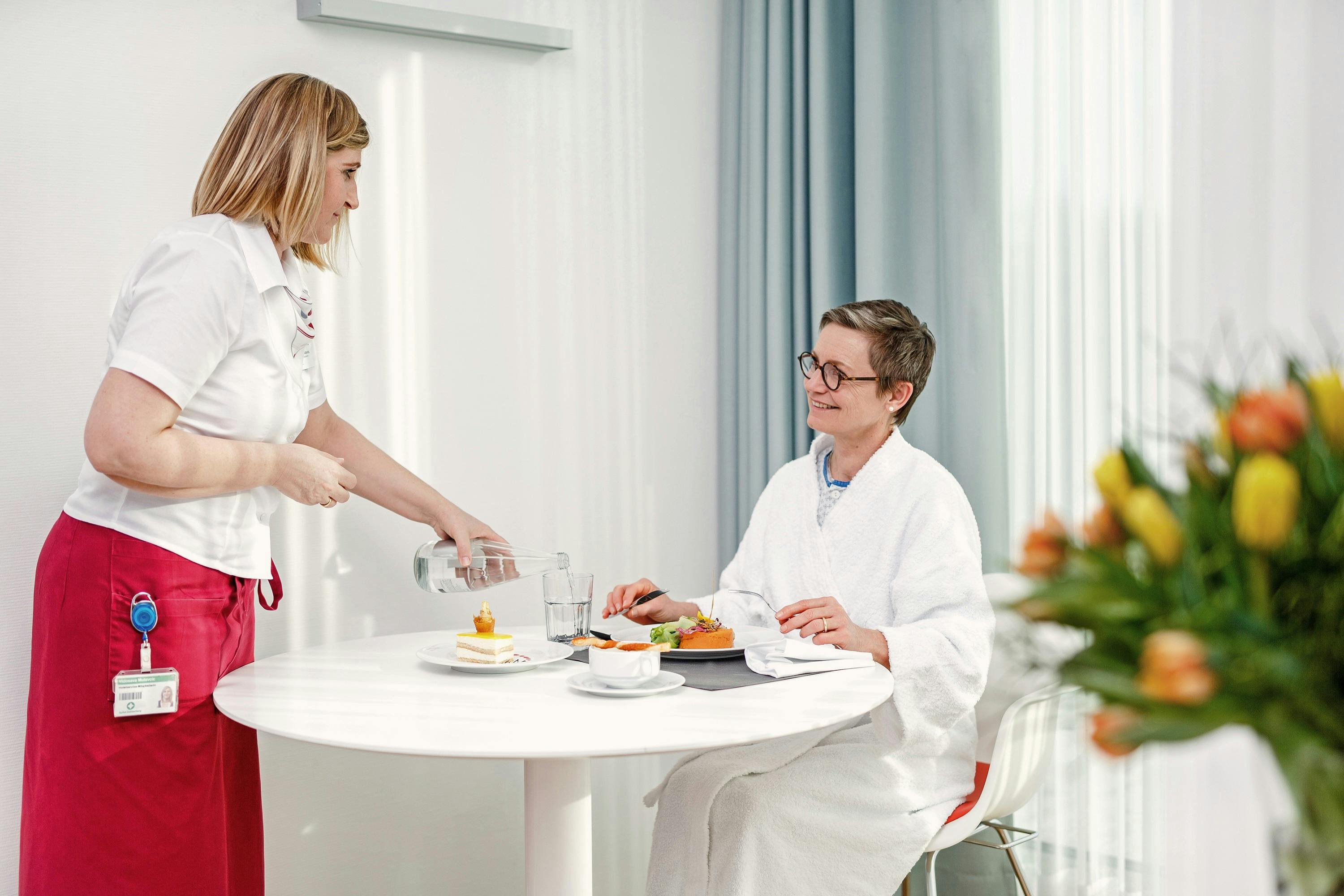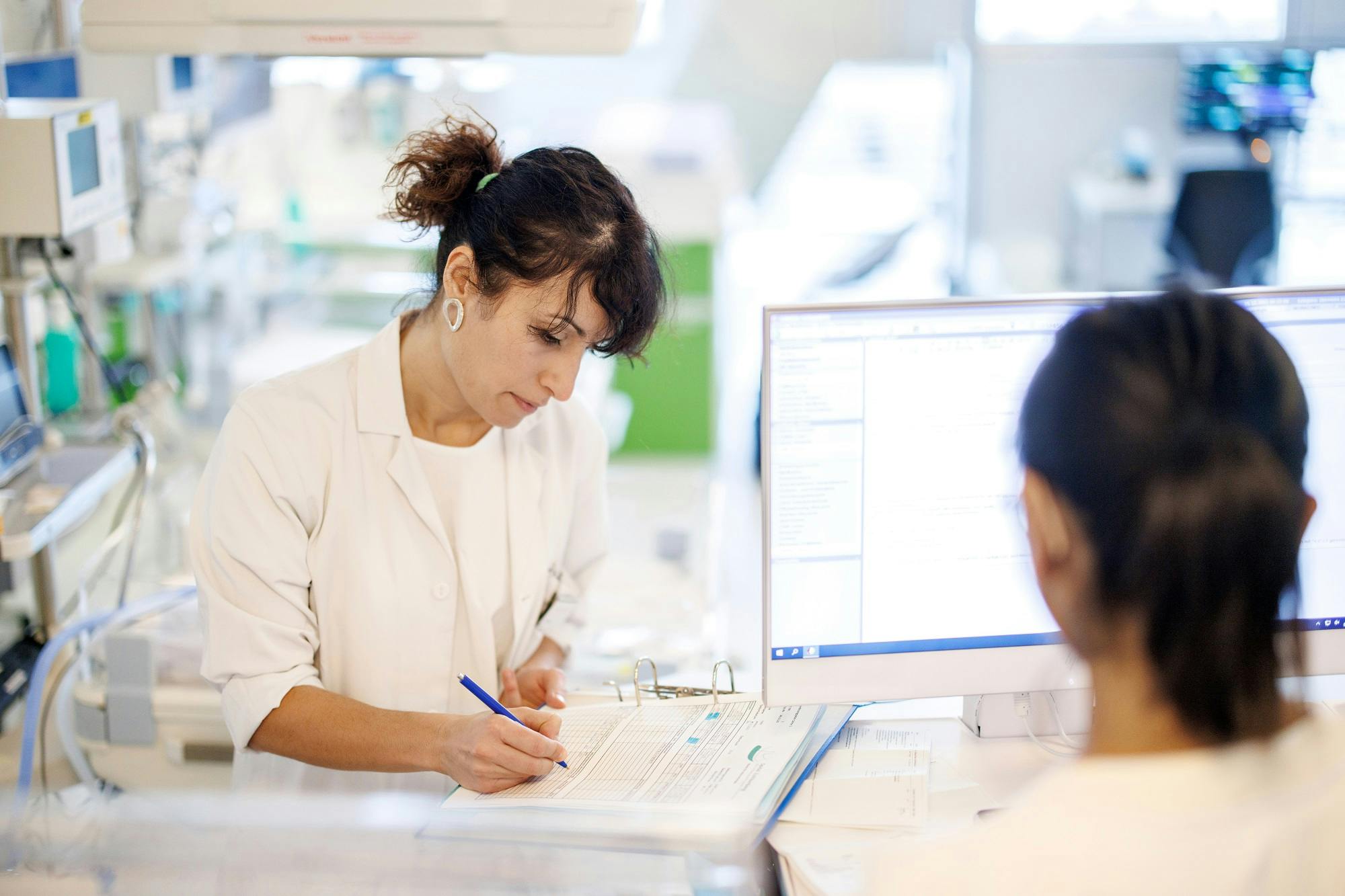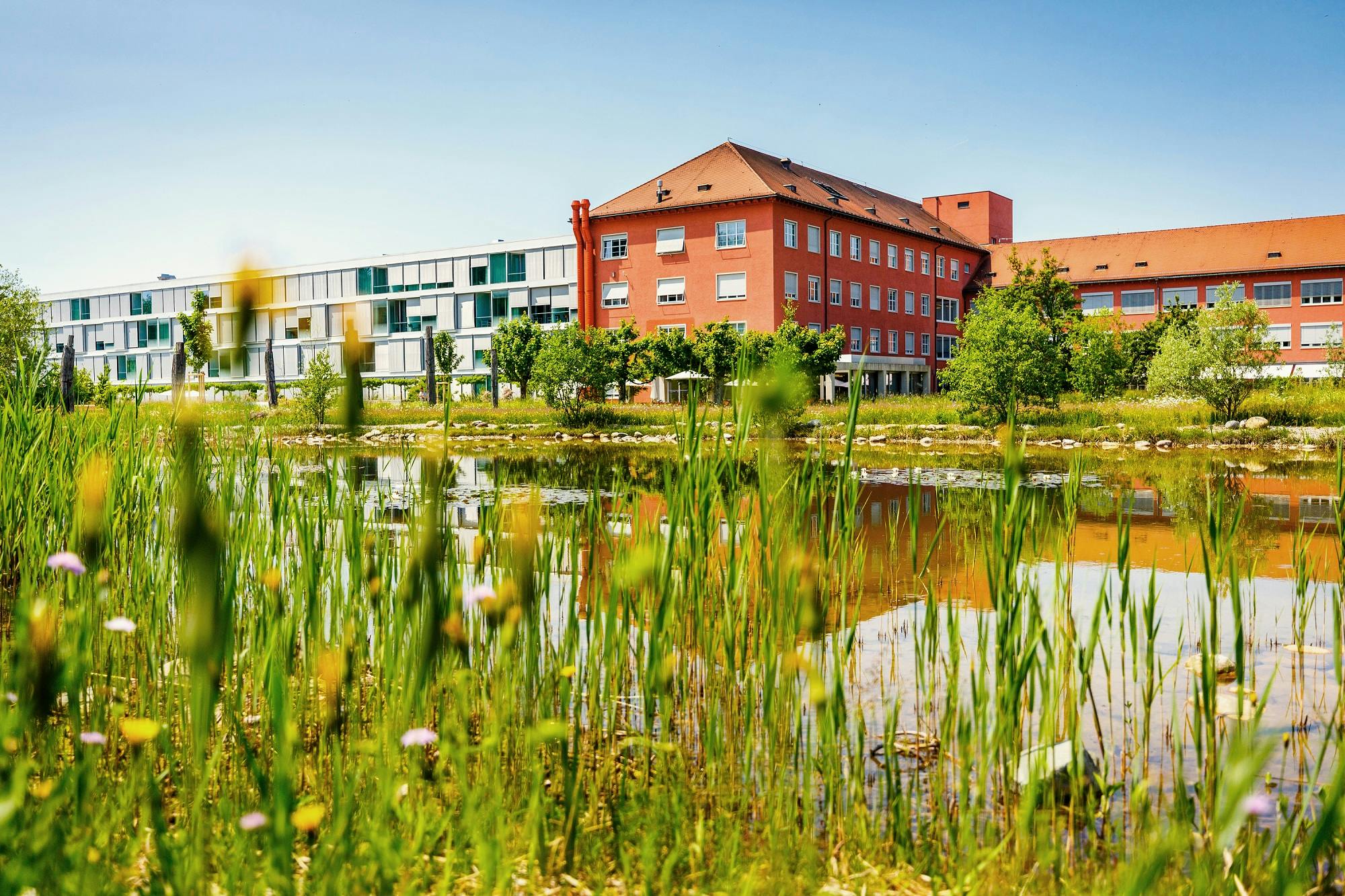Treatment methods for breast cancer
Prof. Dr. med. Hisham Fansa
October 26, 2023
10 min
Prof. Fansa, could you give us an overview of the different breast cancer treatment methods offered at your breast centre?
The treatment of breast cancer rests on several pillars: Surgical therapy of the cancer, drug therapy and radiotherapy. We also offer complementary therapy on request, which can, for example, alleviate symptoms that occur during chemotherapy or the side effects of anti-hormonal therapy.
One important treatment is surgical therapy. In most cases, so-called breast-conserving therapy can be offered. In this case, only the affected part of the breast where the tumour is located is removed. In most cases, we also have to look for the sentinel lymph node. This is usually the lymph node that is most likely to be affected if the tumour spreads. For patients who have a large tumour or in whom several parts of the breast are affected and who therefore cannot undergo breast-conserving surgery, we offer them the option of reconstruction in the same operation in which we remove the breast. The reconstruction can be carried out either with the patient's own tissue, i.e. from the patient's body, or with foreign tissue, i.e. silicone implants.
In addition to surgical therapy, we also have drug therapies that are necessary for the treatment of breast cancer. One of these is anti-hormone therapy. This utilises the fact that most types of breast cancer are susceptible to female hormones. By blocking these hormones in the patient's body with certain drugs (usually tablets), we experience significantly fewer recurrences of breast cancer over the years. The other therapy that is sometimes necessary, especially for more aggressive breast tumours, is chemotherapy and immunotherapy. This involves administering a therapy programme specially selected for the patient. This is usually carried out on an outpatient basis by the medical oncologists with whom we work at the Breast Centre.
The final pillar in the treatment of breast cancer is radiotherapy. Radiotherapy of the breast and lymphatic ducts can minimise the risk of a tumour recurring. This radiotherapy is discussed together in the tumour board and then carried out with our cooperation colleagues at the Hirslanden Clinic.
We also offer complementary therapy at our breast centre. It is important to us that we do not see this therapy as a substitute for standardised, conventional medical treatment, but rather as a supplement and support for the overall well-being and quality of life of patients.
Nutritional therapies and specialised physiotherapeutic treatmentscomplement the range of options we offer our patients. We also offer specialised care from our Breast Care Nurses and provide access to our psycho-oncologists to provide patients with emotional and psychological support.
What different types of breast cancer are there and how does this influence the choice of treatment methods?
There are relatively many different types of breast cancer. It is therefore important to always look closely at the type of breast cancer when making a diagnosis. The treatment depends on the biological criteria of the breast cancer. To put it simply, breast cancer that does not grow very aggressively and is susceptible to the female hormones oestrogen and progesterone usually does not require chemotherapy, but is rather treated with breast-conserving surgery, radiotherapy and anti-hormonal treatment. More aggressive, fast-growing tumours that do not respond as well to hormones are also treated with chemotherapy. Tumours that respond to another receptor (Her2-neu) are a special form. These patients also receive special antibody therapy, with which we are usually able to shrink the tumour and possible metastases well before the operation.
Please also read the
Contribution by Dr Beck on prevention and early detection of breast cancer
The terms prevention and early detection are often used interchangeably and are understood to mean the same thing. However, they have different meanings and it makes sense to distinguish between them.
What role does surgery play in the treatment of breast cancer?
Surgery is still one of the most important forms of treatment for breast cancer if there are no other metastases in the body. Most operations are breast-conserving therapies in which we only remove the tumour from the breast and reshape the rest of the breast so that the volume and shape are preserved as far as possible.
If breast-conserving surgery is not possible, the breast can be removed and reconstructed in the same operation. Breast reconstruction is possible with silicone implants. These have the advantage that they can be placed relatively easily, but they are not suitable if radiotherapy is also to be used. Silicone implants also often have to be replaced after five to ten years. The alternative is reconstruction with autologous tissue. Here, tissue is removed from the body where it may be superfluous, for example from the abdomen or thigh, and then used to form the new breast. The advantage is that the tissue heals permanently in over 98% of cases and no further replacement is necessary. The disadvantage is that a scar has to be made on the body. In most cases, we can also preserve the nipple. If this is not possible, the nipple can be reconstructed later, although this procedure is only performed as a final step after all other therapies have been completed.
Have there been any advances and innovations in recent years that improve patients' chances of recovery and quality of life?
We have become better and better surgically in recent years. We can now offer patients good surgical therapies without compromising the aesthetics of the breast in the long term. It is important that we do not compromise oncologically and achieve the best aesthetic result so that the patient's quality of life does not deteriorate permanently.
Drug treatment has also improved. New drugs have enabled us to significantly improve the treatment of aggressive types of breast cancer. At the same time, we have also reduced so-called overtreatment, i.e. the administration of a therapy that may not be useful oncologically. We do this by offering special tests for many patients today, which can be used to find out whether or not the patient will benefit from chemotherapy. This means that many patients who would certainly have been prescribed chemotherapy in the past are now spared such treatment.
Finally, Prof Dr Fansa, are there any messages you would like to address to breast cancer patients and their relatives?
Breast cancer is still a devastating diagnosis for patients and is very common in industrialised countries. People are usually shocked when they receive this diagnosis. However, we have to realise that of all the cancers we know, breast cancer is the one we can treat best. Most patients are cured and we have very, very good survival rates with a good quality of life.
In addition, with the new drugs we also have the opportunity for many patients who already have metastases in their bodies to achieve long-term survival and to transform the cancer into something like a chronic disease, thereby ensuring a good quality of life for the patient.
Discover the
BreastCentre Zurich at Zollikerberg Hospital
Around one in ten women will develop breast cancer in the course of her life. Fortunately, most changes in the breast are benign. If the worst comes to the worst, you as a patient are in good hands with us.
Weitere Beiträge
Counsellor
Understanding panic attacks: What triggers them and how to counter them
Panic attacks are like sudden storms in the soul - they strike unexpectedly, unleashing a wave of intense fear and often leaving confusion and uncertainty in their wake. But what exactly is a panic attack, how are they diagnosed and treated, and what can sufferers do to deal with them? To delve deeper into this topic, we spoke to Dr Ruedi Schweizer, Medical Director of our Centre for Mental Health.
Counsellor
Can psycho-oncological support improve the chances of recovery or the quality of life of breast cancer patients?
In psycho-oncological topics, you and your relatives will be accompanied through all phases of the illness by experienced psychologists specialising in psychotherapy and specialists in psychiatry and psychotherapy. In this way, we can provide relief, give courage and open up new perspectives. Dr Ruedi Schweizer, our expert in psycho-oncology and Medical Director of the Centre for Mental Health, explains in the following video.
Counsellor
Focus on women's health: An interview with Dr Julia Graf, specialist in gynaecology and obstetrics
On International Women's Day, we would like to focus on women's health. To this end, we met with Dr Julia Graf, an experienced specialist in gynaecology and obstetrics and senior physician at the Women's Clinic, to talk about various aspects of women's health.


